If you’re a regular driver, you may have had the bad luck of experiencing a broken tire bead.
Hitting the curb or pothole, or even a quick sharp turn can result in an unseated tire bead, making the tire impossible to re-inflate.
Reseating the bead by taking it to a workshop might not be the most viable option when you’re left stranded in the middle of a road.
But do not worry because there is a rather quick (albeit dangerous) fix to pop a tire back on the rim.
All you need is some combustible fluid, a source of ignition, and a little faith in science. Just spray a little starter fluid outside the rim, and light it on fire. The expanding gas will push the sidewalls of the tire up and out, causing the tire bead to snap back into place.
You would require the following items to perform this task:
Follow the steps outlined below to properly seat a tire back on the bead:
Step 1: Lift the tire up from the groundElevate the wheel off the ground with the help of a jack. If you’ve already disassembled the wheel, place the rim inside the tire and lay it flat on the ground.
Don’t have a jack?
Well, don’t worry you can check out our guide to jacking up a car without a jack!
Carefully spray some starter fluid in the cavity created by the rim and the sidewall of the tire.
Make sure you don’t spray too much of the liquid as that might damage the sidewall of the tire.
Once you’ve sprayed it around the entire bead, spray a little off the edge of the tire and onto the floor in a straight line.
Be extremely cautious with the amount of fluid that you spray onto the wheel.
Starter fluid is highly flammable. Using exorbitant amounts of such combustible liquid can cause a fire that might be difficult to contain.
Due to this reason, always keep a fire extinguisher nearby.
Using a lighter, matchstick, or whatever source of ignition you have, light up the starter fluid starting from the link you previously made on the ground.
This step must be carried out immediately after spraying the tire bead so that the fluid does not evaporate away.
You might want to step back and distance yourself a bit after this step as it will cause an explosion.
The fire will cause the gases in the wheel to ignite and expand rapidly.
This sudden expansion of gases (an explosion) will cause the tire beads to move along the wheel and catch the grooves, seating them back in place.
As soon as you hear a popping sound, put out the fire as soon as possible.
This indicates that your tire is seated back onto the rim.
Finally, pump air into the tire using an air pump and you’re all set to hit the road again!
There are some disadvantages that come along with this method of popping tires back onto the rim. If not done properly, this can result in Pyrolysis, which is basically the thermal decomposition of the tire.
Pyrolysis can not only cause chemical deterioration of the tire over time but can also lead to a full-blown-out explosion.
The pressure inside may rise up to 7000 kPa and seriously injure anyone in close proximity to the tire.
Watch this video to learn the science behind using fire:
This is why you must always put off the fire as soon as you hear the ‘pop’ sound – usually a couple of seconds after you light up the fire.

Any kind of clicking or popping sound from your car’s tires is a cause for alarm, and something not to be taken lightly.
Sounds coming from a vehicle’s wheels might be due to an underlying problem in one (or more) of the following parts:
In order to find out the exact cause of trouble, you would need to take the car for a road test.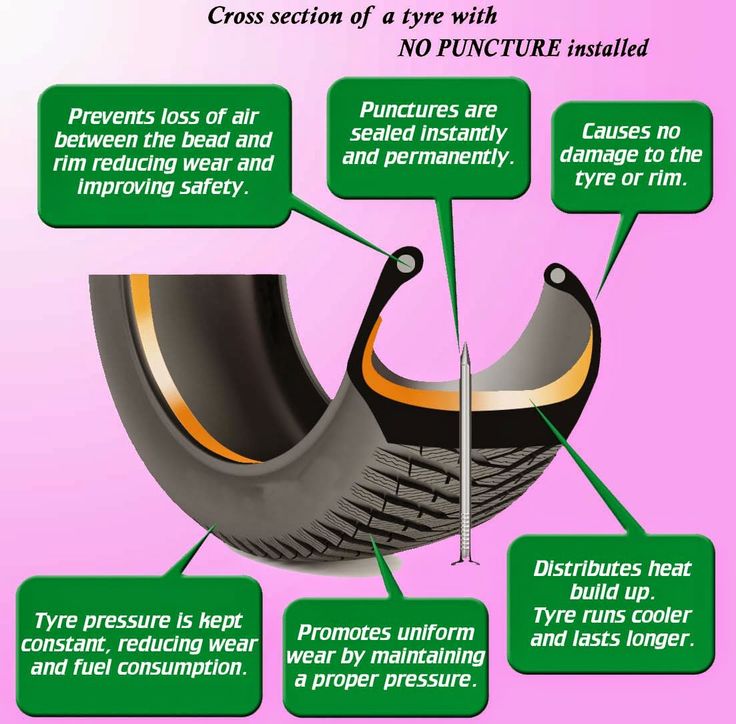
However, before you do that, make sure that there isn’t something dangling off your vehicle or a broken car part causing the noise.
Using fire might be a convenient way to pop your tire back onto the rim, but it surely isn’t the safest. Playing with combustible fluids and fires can be very risky and dangerous if you don’t know what you’re doing exactly.
Always try to seek help from a professional first, and if that isn’t possible, only then should you try pulling off such a feat. Just make sure that you abide by all the necessary safety protocols, and you should probably be fine.
(Visited 5,616 times, 6 visits today)
By
Raphael Orlove
Comments (164)Alerts
Gif: Reddit’s r/WCGW
Was 2021 a great year? Not exactly! But we did have some posts that did good traffic. Take a walk down memory lane with us, as we think back on 2021, a year that will seem much better by this time in 2022.
Take a walk down memory lane with us, as we think back on 2021, a year that will seem much better by this time in 2022.
The internet is awash with people using a spritz or two of brake cleaner or starter fluid to bang set a bead on a tire. As you can see above, there’s a right way and a wrong way.
Getting a tire to mount right on a rim can be a challenge. Hell, I spent a week trying to mount my first tubeless mountain bike tires a few months back and found a lot of the same tips and tricks being used there as you find in the four-wheeled off road and stance car scenes.
The central problem is you want a tire to press right on up to the inside lip of the rim and kind of lock in place. Tires have a kind of raised edge right at the inside lip, and rims have a raised edge, too, on the inside of their outer edge. As you inflate the tire, its bead pushes out to the edge of the rim and forms its airtight seal. This is called “setting the bead,” and usually it’s a pretty easy job both on a bike or a car tire. Pumping up the tire with air is usually enough to set the bead on anything ordinary, and if it’s tough, slightly overfilling the tire with air will get you the pop ... pop ... ping! of the bead seating. Amazingly, I dug up some fantastically low-res images on government websites that I am free to use to illustrate my point.
Pumping up the tire with air is usually enough to set the bead on anything ordinary, and if it’s tough, slightly overfilling the tire with air will get you the pop ... pop ... ping! of the bead seating. Amazingly, I dug up some fantastically low-res images on government websites that I am free to use to illustrate my point.
Here you can see a fueleconomy.gov diagram of a car tire, with its lipped bead:
Illustration: FuelEconomy.gov
And here is how that bead seats into a rim, as seen in a NHTSA cutaway:
Photo: NHTSA
Sometimes, though, a tough tire on a wide rim will not quite want to work its way to the bead. This is why you see people lubricating the bead with soapy water when mounting a tire.
It’s also why you see some people (particularly those in the off-roading world) use a ratchet strap to help set a bead. The idea in this case is to press the tire down and out towards the lip of the rim, doing some of the work for you before you start trying to blast air into the tire. Here’s an example:
Here’s an example:
And here’s a more low-tech example on a small tractor tire using a rope:
Both of these methods help you out if you don’t have a giant air compressor to get a huge blast of air in to really pop in a tricky bead. But what else gives you a big blast of air pressure? An explosion! This is the fundamental theory of using fire to set a bead. There really isn’t that much fuel needed to get even a pretty big tire to set its bead, as seen here on a Jeep:
You see the same technique in the world of stance cars fairly often, as people try and mount tires on wider and wider wheels. Even a pretty normal tire will need some help to stretch out and meet the lip of the rim. Here’s Hoonigan doing it with a strong “don’t try this at home” warning a few years back:
Car And Driver also has its own step-by-step guide to using fire to set a bead while out in the field, with similar intonations not to do this. As someone who grew up in California and had to live through many a smoke-filled summer from wildfires, I, too, would not encourage anyone to do this while in a dry field or pine forest they happen to be Jeep’ing through.
As you can see in the videos, not a ton of combustable fluid is at hand. Too much of an explosion and you risk not just inflating the tire enough to set the bead, but enough to blow out the tire altogether.
That’s exactly what happens in this video uploaded to Reddit’s terrifying What Could Go Wrong subreddit. The video itself is overflowing with wonderful Brazilian energy, and every word in Portuguese uttered is dripping with confidence, even as the guy dumps basically a full Mountain Dew’s worth of gas into this tractor tire:
17,655 votes and 571 comments so far on Reddit
Read more
I apologize that I can’t embed the video, as our CMS isn’t quite as friendly to my old hacks that would get anything in here. I do encourage you to click the link above and watch the video.
The best I can do otherwise is give you a frame-by-frame.
Screenshot: Reddit’s r/WCGW
Let us first enjoy the optimism presented here. What could go wrong, indeed!
What could go wrong, indeed!
Screenshot: Reddit’s r/WCGW
A key element of this process is to slap the tire first, patting it as you would a horse.
Screenshot: Reddit’s r/WCGW
Here we can see a truly large volume of combustable liquid going into the tire. How much liquid? Too much.
Screenshot: Reddit’s r/WCGW
The guys hook up air to the tire — fire might set the bead, but this air is meant to keep it set and filled with air. Our hero in the blue jeans is making a safety trail of fluid that could have been longer, honestly. A few hundred feet would have been comfortable for me.
Screenshot: Reddit’s r/WCGW
Our second and only other safety measure is to use a lit rag on a stick to set things off. Ear protection? Nah. Eye protection? Nah. Rag on a stick! You’re good, bud.
Screenshot: Reddit’s r/WCGW
Here, for just a moment, we see that this actually worked! The bead, as you can see in this frame, is set. Look at how snug that giant tire is to the bead. Perfection.
Perfection.
Screenshot: Reddit’s r/WCGW
And just one frame later, our failure is more than present. The explosion of the tire blowing out is enough to distort reality. Our protagonist has turned wiggly. I would not want to be an ear drum anywhere near this.
Screenshot: Reddit’s r/WCGW
Here, also, is a good view of the tire itself blowing out. You can have too much of a good thing.
Screenshot: Reddit’s r/WCGW
And here is our aftermath. The bead is not set, the tire is on fire, and the windows on the tractor are trash. We have now entered into a new calculus of wondering — would it have taken less time to set this bead using a non-explosive method than it will take now to fix the broken glass on this John Deere? We may never know.
90,000 air for starting the engine videoContent:
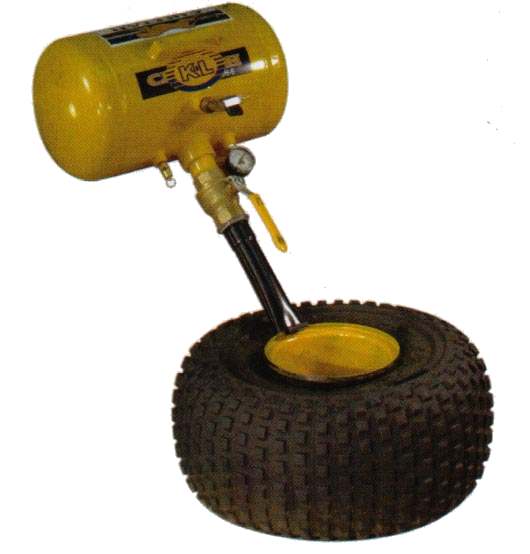 Join the team
Join the team The main difference between the diesel engine and gasoline is that in a diesel engine, fuel is injected into the combustion chamber through the nozzles of the fuel injectors only when air is placed in each chamber at high pressure, and hot enough to spontaneously ignite the fuel.
Brief starting diagram:
1. The driver turns the key in the ignition, and while he waits, the engine builds up enough heat in the cylinders to start satisfactorily. Turning the key starts a process in which fuel is injected into the cylinders at high pressure so that the air in the cylinders heats up on its own.
Turning the key starts a process in which fuel is injected into the cylinders at high pressure so that the air in the cylinders heats up on its own.
Diesel fuel is more stable than gasoline and ignites more easily if the combustion chamber is warmed up, so manufacturers originally installed small battery operated glow plugs that preheat the air in the cylinders and allow the diesel engine to start quickly.
2. After the key is turned, the fuel pumps deliver fuel from the fuel tank to the engine. On its way, the fuel passes through a pair of filters that clean it.
Proper filter maintenance is especially important in diesel engines because fuel contaminants can clog tiny holes in the injector nozzles.
4. At the same time, the air intake process starts. On conventional diesels, air enters through the air cleaner. Modern turbochargers can force large volumes of air into the cylinders, providing more power and fuel economy under optimal conditions.
5. Combustion is propagated by a smaller amount of fuel, which is placed under pressure in the prechamber and air in the combustion chamber itself.
Combustion is propagated by a smaller amount of fuel, which is placed under pressure in the prechamber and air in the combustion chamber itself.
Silicot universal silicone grease in Moscow 1004 offers
Quick engine start in frost in winter ...
Greetings to all Renault Logan motorists, dear readers of the AAuhadullin.ru blog! As we see on the thermometer today - 27 degrees of cold and now we will demonstrate how a Renault Logan car starts in such a frost.
A dehumidifier was previously added to the gas tank, as well as an injector cleaner. At the same time, the spark plugs were cleaned, the battery was charged. Friends car was prepared to make a quick start of the engine in winter.
So, let's go to the parking lot to start the engine...
Overboard - 27 frost and now we will demonstrate how our Renault Logan starts at this temperature. It is worth clarifying that the engine did not warm up at night.
Then turn on the ignition so that the pump pumps up gasoline before starting.
Switch off the ignition. Next, without touching the gas pedal naked, turn the starter with the ignition key and start the engine. As we can see (see YouTube video), the engine started up almost immediately, without any problems.
If you have the opportunity to warm up the engine at night, then in the morning in the winter frost the car will start easier, and the wear of the rubbing pairs will be less and work much softer.
In winter, a Renault Logan warmed up at night starts easier in the morning.
Now, although our engine started up without problems, it still works hard until the oil warms up completely and its supply to the rubbing pairs is full. The previous time (the temperature was also about -27 degrees cold), our battery was discharged, the engine did not start after three attempts, and the battery was put on charge.
The previous time (the temperature was also about -27 degrees cold), our battery was discharged, the engine did not start after three attempts, and the battery was put on charge.
While the battery was being charged, on the advice of a good friend of mine, I poured a dehumidifier into the gas tank. The bottle with the product is clearly visible in the video. Read the inscription - "RUNWAY Moisture remover from the gas tank" - St. Petersburg. The tool is designed for 50 liters of gasoline. Since there were about 20 liters of fuel in the tank at that time, half a bottle of this product was poured into the tank.
The neck of the bottle is long and narrow, so it is very convenient to pour the product into the gas tank neck. Then the spark plugs were removed from the wells of the block. They ended up in soot, they had to be cleaned a little. The candles were cleaned, and while the battery was being charged, the candles were "heated" on the radiator of the house.
Later, when the battery was charged, warm plugs were installed on the engine before its quick start. When a bottle of dehumidifier not expensive from St. Petersburg was purchased, the store was advised to also purchase an aerosol for a quick start of the engine. The tool has been purchased. It is produced by the well-known company HI-Gear.
When a bottle of dehumidifier not expensive from St. Petersburg was purchased, the store was advised to also purchase an aerosol for a quick start of the engine. The tool has been purchased. It is produced by the well-known company HI-Gear.
Before starting the engine, I sprayed the “quick start” agent into the air duct (the video clearly shows where and how much to spray this agent). It is intended for both carburetor, injection, and diesel engines.
The agent is highly flammable, therefore it must not be sprayed for more than 5-7 seconds. There are detailed instructions on the cylinder, which must be carefully read in order to avoid possible troubles when using this flammable agent. When using "quick engine start", it is best to start the engine with two people.
One is driving while the other is in the engine compartment. After the aerosol has been sprayed for about 5 seconds, the assistant immediately starts the engine with a starter. After three days and nights of charging, the battery was installed on the car, and the old spark plugs were cleaned. Then they removed the air duct and sprayed about 5 seconds with an aerosol for a quick start.
After three days and nights of charging, the battery was installed on the car, and the old spark plugs were cleaned. Then they removed the air duct and sprayed about 5 seconds with an aerosol for a quick start.
In general, friends, the engine started on the next attempt, when the gas pedal was again fully depressed to the "floor". At first, the engine doubled, troiled, smoked, but in the end all the spark plugs “woke up” and the engine started running smoothly, almost like a clock.
After these unsuccessful attempts to start the engine, an injector cleaner, number two, was purchased. In total, they are produced by three numbers, the middle one is the most neutral, it does not rip off dirt from the walls of the gas tank so much. Arriving at the gas station, I poured in an injector cleaner, and then filled in a full tank of good 95th gasoline.
As a result, today you could see on the video that after all these manipulations with the engine and good additives, the engine started up without problems when it was -27 degrees cold.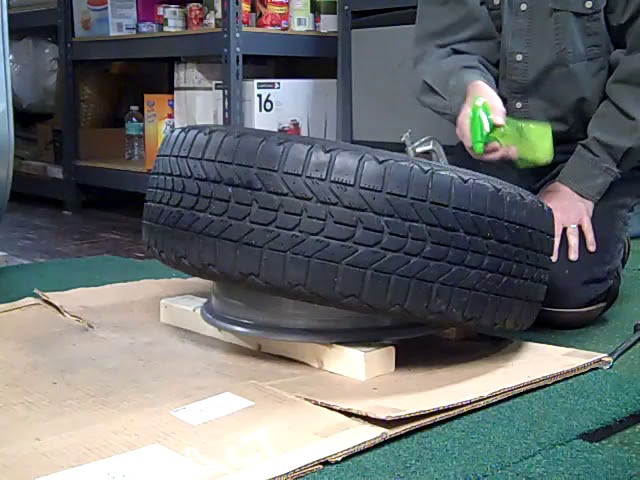
Watch the YouTube video below:
You can also read other articles:
How to quickly start the engine in cold weather
How to make a start button instead of an ignition key in a car with your own hands. How to connect a starter
This German manufacturer, which manufactures products for starting the engine in winter, coped better than the rest with eliminating possible risks. The products are popular and in demand, this is due to the well-balanced composition of the emulsion. In the manufacture, substances that can easily ignite are used, anti-erosion and lubricants are included.
Star Fix fluid can be poured into power plants that perform two and four cycles per cycle, as well as into rotary, diesel, prechamber engines. The manufacturer also recommends using the liquid on lawn mowers, chainsaws, snowmobiles, motorcycles, etc. The minimum operating temperature is -50 degrees, it can be used in a humid environment. The volume of the cylinder is 200 ml (article 3902), the composition includes propane, butane, nitrogen.
The volume of the cylinder is 200 ml (article 3902), the composition includes propane, butane, nitrogen.
Star Fix Motor Fluid:
Grease definitions and concepts. What is grease
installation section
To install Flussonic, run the following command from the Linux command line:
curl -sSf https://flussonic.com/public/install.sh | sh
Then start Flussonic Media Server:
/etc/init.d/flussonic start
Now open the Web Admin Interface in your browser.
Flussonic web interface is available at (replace with your server address).
Default login and password: and
On the start page, Flussonic asks you to enter the received key.
On the same page, you must immediately change the administrator password for managing Flussonic Media Server.
The license key is stored in the file , you can enter it manually before starting Flussonic, then you won't need to specify it in the web interface.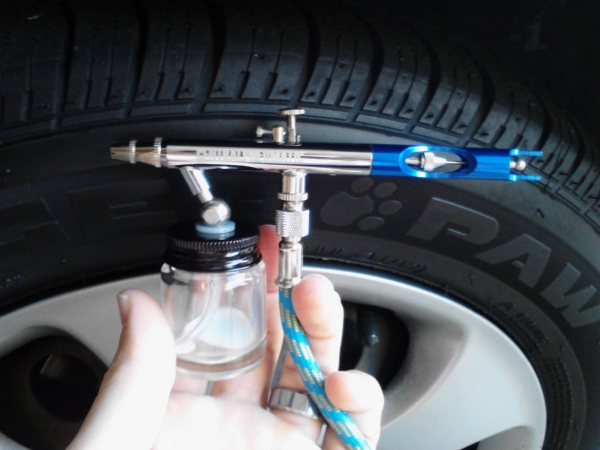
You can check if Flussonic Media Server is installed correctly at , where is the address of the server on which you installed the software. The main page of the Flussonic web interface will open.
Another way to check if the installation is correct is to run the command:
/etc/init.d/flussonic status
The system response should be something like this:
# /etc/init.d/flussonic status Flussonic 19.05 is running with streams: ...
So, often the problem looks like this, that in summer the starter turned the crankshaft normally, the engine quickly “seized” after two or three revolutions. However, when trying to start a cold start in winter, the rotation of the starter is slowed down, the starter turns the engine “sluggishly” and it is not possible to start the internal combustion engine. If the engine does start, after warming up, further starts of the engine will occur easily until the car is again put on a long overnight stop.
Usually in such a situation, most problems arise precisely through the fault of the owner himself, that is, it is not a matter of technology. The main thing is to properly prepare the car for frost, as well as be able to use the available methods to make it easier to start a cold engine.
 However, it is optimal, if possible, not to be limited only to replenishing the charge. It is better to carry out a comprehensive battery maintenance if the battery is serviceable. As part of this service, the state of the electrolyte and its level in the banks are checked, the density is measured, the electrical capacity and ability to hold a charge are evaluated.
However, it is optimal, if possible, not to be limited only to replenishing the charge. It is better to carry out a comprehensive battery maintenance if the battery is serviceable. As part of this service, the state of the electrolyte and its level in the banks are checked, the density is measured, the electrical capacity and ability to hold a charge are evaluated. In view of the foregoing, it becomes clear that if the engine worked properly in the summer and started normally, then we can talk about the absence of problems with the engine itself and attachments. In this case, candles and a battery can most often fail, less often too viscous engine oil makes it difficult to start.
If the starter is defective or the battery has failed, the engine has low compression, there are problems with the quality of the fuel or fuel supply, there is no spark on the candles, etc., then the main problem should first be eliminated, and only then various methods should be used to facilitating engine start. In other words, the engine must initially be serviceable and well adjusted.
In other words, the engine must initially be serviceable and well adjusted.
There are various ways to insulate a diesel engine. Some companies offer heating blankets that cover the entire engine bay and keep everyone warm throughout the cold night. Some drivers recommend battery heaters that keep only the battery warm and the starting power aids cold.
The most popular way to heat an engine is to use a block heater, which is typically installed in the coolant passages of the engine block. At low temperatures, cold oil and coolant become thick and viscous, making it difficult for the engine to run. The heating unit keeps these components at a higher temperature, making it easier to start the car in the morning.
Diesel engines are used in everything from personal cars to locomotives. The engine is versatile, starts fairly quickly and delivers exceptional fuel economy. Diesel engines are successfully used in mines and confined spaces as a result of low CO2 emissions and perform well regardless of the ambient climate.
Find your air filter - these are devices on all vehicles that allow the engine to mix air with fuel, which makes it possible to burn. The air filter will always be attached to the engine and located under the hood. But different manufacturers make their vehicles using different technologies, so the air filter on different cars can be located in different places. To locate it, refer to your vehicle's owner's manual.
Spray a small amount of aerosol into the air filter. Hold the starting fluid bottle upright. Point the nozzle of the can at the air filter from a distance of about 20 centimeters. Spray the engine with quick start fluid for about two seconds, then try to start it. If the engine still does not start, repeat the quick start spray procedure within 2 seconds. To do this, you need to remove the air filter cover. If the car does not start even after applying the quick start, you should contact your mechanic. If the engine does not start even with proper application of starting fluid, the problem may not be the engine itself. For example, the ignition or some other system may be faulty.
For example, the ignition or some other system may be faulty.
Quick Start is sprayed onto the engine near the air filter, carburetor or engine spark plug opening to quickly add fuel to the combustion cylinder. The use of starting fluid to speed up the engine avoids wear on the starter, especially on infrequently used vehicles. Other uses include cold weather starts, vehicles that are out of fuel and therefore require extra time to repressurize, and sometimes with flooded engines. Mechanics sometimes spray a spray to diagnose starting problems by determining if the spark and the vehicle's ignition system are working; if there is sufficient spark but no fuel supply system, the engine will run until quick start fumes are consumed. Most often the product is used with fuel injection systems
When using starting fluid with diesel engines that have a preheating system, care must be taken as quick start may ignite, resulting in engine damage.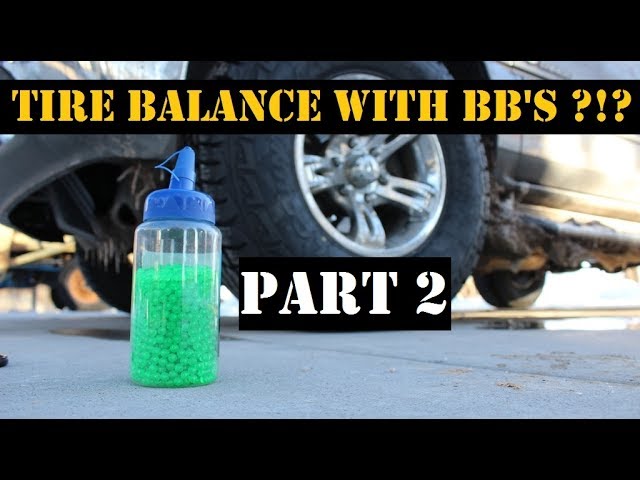
The fluid used to quickly start the engine in winter is visually an aerosol placed in a can. The composition of the volatile substance contains: propane, butane, flammable ethers, alcohols, stabilizers and other additives. In addition, lubricants are added to the mixture, which nullify the friction of the piston rings on the dry cylinder mirror. The liquid introduced into the chamber gives the fuel present there an even greater ability to ignite.
In addition, lubricants are added to the mixture, which nullify the friction of the piston rings on the dry cylinder mirror. The liquid introduced into the chamber gives the fuel present there an even greater ability to ignite.
The contents of the can are capable of activating the power motor in conditions of fifty degrees of frost. Another feature is the stabilization of the combustible properties of the fuel in a humid climate, or a sharp temperature drop. Under such conditions, the condensate that has accumulated on electrical equipment does not allow the candles to develop the necessary power so that the necessary charge is formed and the engine cannot be started without liquid.
Gasoline engines are spark ignition engines. They work from a mixture of gasoline and air, compress it, then ignite it with an electric spark - as a result of the explosion, force is produced.
Diesel engines are ignited by a flow of air that is compressed to increase pressure and temperature and then sawn into diesel fuel. Hot compressed air ignites the diesel fuel and power is produced as a result of combustion and expansion.
Hot compressed air ignites the diesel fuel and power is produced as a result of combustion and expansion.
Diesel engine advantages:
Disadvantages of diesel engines
 Diesel vehicles are equipped with soundproofing to mitigate the characteristic diesel knock.
Diesel vehicles are equipped with soundproofing to mitigate the characteristic diesel knock. Task 1. Subscribe to the team mailing list so as not to miss important news from the company and our RichTeam team.
Task 2. Order products for your own use for 250 points or more (in case you did not do this with the start order), and, of course, start using them.
Task 3. Write 20 (or more) reasons why you decided to do business with LR. The more of these reasons that are related to what you want in life, the better.
What are the top 3 reasons.
Send a copy of the list to the sponsor.
Activity 4. Study the Concept for Success brochure included in your starter kit.
You can download the electronic version of the Concept for Success brochure right now.
To do this, right-click on this link and select "Save as ..."
Task 5. Log into your personal LR office at http://lrworld.com
Select Partner Login.
Then enter your LR registration number and password.
Where can I get the password?
Along with the order, you should receive a welcome letter (this is one A4 page) - on it you will see a four-digit pin code. This is your password.
This is your password.
You can also get this password from the support service.
Support contacts (Russia):
+7 800 700 01 01
+7 495 660 50 06
Get to know your personal office.
Explore the “My turnover” section, Explore the “LR in the world” section - you will find the necessary information on the work of LR in different countries of the world in it
Task 6. Call your mentor and arrange with him to conduct you start training
Ask your mentor when the next major LR event is - plan this trip.
Task 7. Ask your sponsor for the contacts of his two mentors - call them and ask for advice for a beginner.
Task 8. Connect to the RichTeamPro team training system
Check out the weekly online school schedule. Schedule this time in your diary and be at all schools.
Click on this link to go to the school schedule.
Task 1. Listen to the audio recording from our mentors Heinrich Erdmann and Philippe Robillard “Why LR. Why now."
Why now."
Right click on this link and select "Save As..." to save the training to your computer.
Task 2. Read at least 30 pages of Mark Yarnell's "Your First Year in Network Marketing" within the first 3 days
Right-click on this link and select "Save As..." to save the book a computer.
Step 1. Make a list of your contacts of at least 100 people.
Take a piece of paper or open Excel (whatever works best for you) and write down the names and contacts of everyone you know or used to know.
Don't decide for people, add everyone to this list and let them decide for themselves whether they are interested in our offer.
Add all your relatives, friends and acquaintances to the list, write down all contacts from your mobile phone, address book. Copy data from business cards. Think of everyone you have studied or trained with.
Be sure to add networkers you know there.
By the way a person makes a list, you can already understand how seriously he takes the business.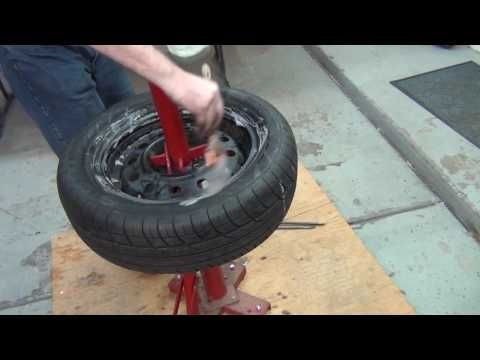
Allow 1 hour to complete the list. Ask your mentor to help you.
Step 2: Make a few dozen business-product-recommendation calls
Important: Remember the “say no first” rule. If a person is not interested in what we offer him, end the conversation
Do not engage in free therapy
If a person is not interested in what we offer him, end the conversation. Don't get free therapy.
Call patterns see below.
To download a file with a meeting invitation template, right-click on the yellow button and select "Save as ..."
Your business starts with the right skills and simple first steps.
Thousands of people around the world have already achieved financial freedom and made their dreams come true with LR.
Use our proven command system to succeed in your business.
We believe that you will succeed.
See you at the top!
Andrey Vedenyev and Elena Grezina
Publishing is a situation when another program connects to Flussonic Media Server and initiates the transfer of streaming video to it.
For this to be possible, a server location must be configured in Flussonic Media Server to which publishing is allowed.
This can be done in two ways.
To enable publishing to a specific stream, use the option:
stream publishdemo { url publish://; } The name of the stream () is already known to the Flussonic server because you have configured a stream with this name.
In this case, you need to publish to the URL:
and you can watch it on the page:
You will need to configure the publishing location (publishing location, or prefix) on the Flussonic server, where you allow stream publishing. Multiple streams can be published to the same publish location.
The directive specifies a prefix (in the example: ), allowing publication to any stream with such a prefix in the address:
live mylive { } Prefix added to default config file after installation. Check for it in .
Check for it in .
If there is no such directive in your file, add it and apply the settings:
/etc/init.d/flussonic reload
You can publish a video using a utility that is installed in the package and located in the . To publish a file via RTMP to a prefix, use the syntax:
/opt/flussonic/contrib/rtmp_push FILE.mp4 rtmp://FLUSSONIC-IP:1935/mylive/STREAM_NAME
Example
For transmission, we use the RTMP protocol, the source of the video will be a file (for a file, see the section on live streaming above):
/opt/flussonic/contrib/rtmp_push /opt/flussonic/priv/bunny.mp4 rtmp: //127.0.0.1/mylive/bunny
You can view the published video on page
http://FLUSSONIC-IP:8080/mylive/bunny/embed.html
Important. If you specified a publish prefix in the configuration, then you must specify the stream name in the URL,
starting with , for example,
The stream name that comes after the prefix specifies the client application that publishes the video. The stream name is not specified in the Flussonic Media Server configuration.
The stream name is not specified in the Flussonic Media Server configuration.
For more information about publishing, see Publishing a video.
Having become familiar with the principle of operation of the liquid, a reasonable question arises whether the use of aerosols poses a threat to the motor. Note that "thoughtless" use increases the risk of breakdowns of some components and mechanisms of the engine. However, do not forget that the tool is used in cases where other methods have failed, and you can’t do without a machine.
In addition, the danger lies in the use of liquid, without reading the instructions for use, which must be attached to the product. So, exceeding the specified dose is the main mistake made by the user.
Despite the fact that advertising and official representatives of chemical companies declare complete safety, upon closer inspection, unpleasant nuances emerge, the truth lies in the composition of the substance. The fact is that the components included in the liquid are prone to "explosive" ignition, which causes increased detonation in the chamber. Having made a quick start of the engine once, the driver is unlikely to feel negative consequences. However, repeated activation, or the launch of a worn-out unit, can bring destruction. In the "risk zone" rings, valves, chambers, etc.
The fact is that the components included in the liquid are prone to "explosive" ignition, which causes increased detonation in the chamber. Having made a quick start of the engine once, the driver is unlikely to feel negative consequences. However, repeated activation, or the launch of a worn-out unit, can bring destruction. In the "risk zone" rings, valves, chambers, etc.
It should be noted that frequent use of the product leads to wear of the motor. The culprits of the phenomenon are ethers dissolved in the contents of the vial. The liquid washes away the protective oil film from the surface of the mirror, as a result, the friction in the cylinders goes to "dry". Despite the developers' statements about the presence of lubricant in the suspension, the action of the liquid is enough for a fraction of a second only to start the motor.
Parts affected:

Please note that the listed failures occur rarely and are associated with improper or frequent use of the drug. It is necessary to resort to the services of a “quick start” in rare cases when there is no other way out
When doing a “quick start” of a diesel engine in winter, be careful with the procedure. The peculiarity of this type of engines is the ignition of the mixture by strong compression of the cylinder volume. Another tip, buy products from trusted manufacturers, do not chase cheap goods, because in the future you will have to pay more.
There are situations when there is no liquid at hand to start the engine. The car must be started urgently, but nearby, no store, no people. With such a development of events, proven methods will come to the rescue, which can only be used in emergency cases, but the driver must be aware of them.
The introduction of a cube of gasoline into the intake tract of the engine:
2, 95) using a syringe. The motor is preliminarily rotated using 3-4 sets of 5 seconds. The action drives the stagnant oil around the circuit, preparing the unit for start-up. After the fuel is injected into the area of \u200b\u200bthe air filter and the engine is immediately started. With a successful combination of circumstances (working candles and a battery), the engine starts from the first seconds.
The motor is preliminarily rotated using 3-4 sets of 5 seconds. The action drives the stagnant oil around the circuit, preparing the unit for start-up. After the fuel is injected into the area of \u200b\u200bthe air filter and the engine is immediately started. With a successful combination of circumstances (working candles and a battery), the engine starts from the first seconds.
You can make your own quick start fluid. To do this, use kerosene, oil, gasoline or ether (instead of gasoline). It is impossible to use such means systematically, but in case of emergency, the liquid will help.
Some first-aid kits are equipped with such a substance as ether
It is important to remember that the use of liquid entails such negative consequences as deformation of the rings, displacer, connecting rod and other related parts. Less risk when using the substance on diesel engines
Remember that the agent must be injected in small doses, since the impact on the piston group is negative.
It is noteworthy that for a diesel engine, a safe starting fluid is silicone grease. The mixture is fed into the intake manifold, continuously until the plant of the unit. The only condition for a successful procedure is the serviceability of the glow plugs, otherwise, the method of supplying an open flame to the inlet is used.
Spraying flammable liquid on the engine carburetor:
The last method, which can only be used if the above products are not available, is a can of hairspray, deodorant or air freshener. The engine, when using these products, is able to start due to the presence of combustible gases in the mixture. True, it is worth resorting to this method in a rare case.
Please note that the machine normally starts without improvised means. If you have to resort to "extreme" measures, the machine needs to identify problems and then fix the problem. This approach is preferable and the choice is made in favor of the latter.

October 9, 2017
If the lock is frozen or the doors are frozen, the main thing is not to panic, but to use proven methods of defrosting!

Is the door frozen? No panic! The car has several of them, so try to open others. Do not give in? Again, set aside panic: we press on the door along the contour and tap it with the palm of our hand. The ice may crumble and the door will give way.
Before starting the procedure, it is recommended to clean the edges of the doors from ice and snow with a brush or other improvised means.
Tired of knocking and brushing? Then purchase car chemicals for processing rubber car door seals to avoid freezing. If the door is already frozen, treat the surfaces and joints with a defroster from the winter car care line.
If the door is already frozen, treat the surfaces and joints with a defroster from the winter car care line.
Note! A frozen door cannot be jerked sharply - the seal will come off
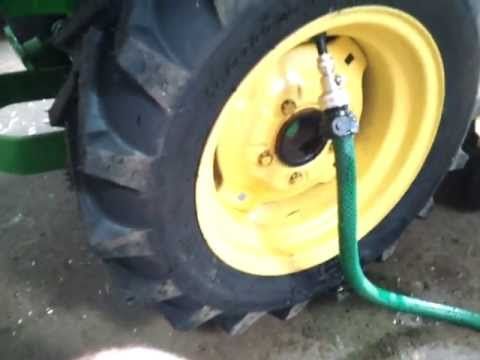
If the ignition lock is frozen, it can be warmed up in the same ways as the locks on the doors.
Wiper blades have a tendency to freeze and become covered with frost. By turning on such "wipers" there is a risk of burning the wiper motor and / or scratching the windshield.
Ice on the glass is removed by cleaners with defrost components.
After starting the engine, wait to turn on the stove so that the engine warms up faster.
On a manual transmission, the clutch must be depressed when starting in cold weather.
Gear oil thickens at low temperatures. After starting the engine, the box must be allowed to warm up. This is especially important for automatic transmissions.
Automotive expert tip : To warm up the electrolyte in the battery, turn on the low beam for 10-15 seconds. Helps, however, with mild frost.
When starting the car, do not turn the starter for more than 10 seconds. If during this time it does not start, then stop torturing the unit.
If during this time it does not start, then stop torturing the unit.
At the end, a working technique for warming the washer reservoir:
If the ice has not completely filled the tank, then pour warm defrosting liquid, vodka or alcohol into it in proportions of 1:3 or 1:5
Pour a mixture of cold water and cheap vodka into an empty tank
If the ice has completely occupied the entire volume of the container, then you need to drill a hole in the ice and pour the defrosting liquid into it. Alternatively, put the car in a warm parking lot and start it.
For those who like to melt ice with a boiler, it is worth remembering that it is necessary to warm up with short inclusions.
Be sure to remove moisture from the gas tank before the onset of cold weather. This can be done with the help of moisture removers. Otherwise, the fuel filter mesh will turn into ice, and gasoline will not be able to enter the fuel system in the right amount.